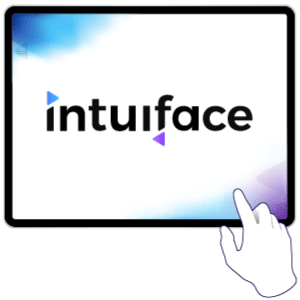Innovating Museum Experiences: Prototypes for Inclusive Design using Intuiface and Generative AI

Introduction
At Tosolini Productions, our passion for research and development drives our pursuit of innovation. In collaboration with the Museum of Flight in Seattle WA, we have embarked on a journey to discover how technology can be harnessed to elevate the museum experience, aligning with the values of accessibility and inclusivity. Our exploration has led us to embrace Generative AI, a once-in-a-generation technology that opens the door to groundbreaking experiences.
To realize our vision, we started with Intuiface. What we love about Intuiface is how it empowers its users to easily tap into the incredible potential of generative AI through Web APIs, while also seamlessly integrating with sensors and a wide variety of third-party technologies, expanding the horizons for interactive experiences.
The following prototypes are the tangible results of this ongoing exploration, exemplifying the potential of technology to enrich the museum experience and create meaningful connections with diverse audiences.
All of these prototypes were shared with the Intuiface User Community and can be downloaded for free. You will need to supply your own OpenAI credentials to take advantage of the GPT-powered features.
AI-Powered Interactive Kiosk

Our first prototype showcases an interactive kiosk that leverages the capabilities of OpenAI's GPT-3.5 AI model to deliver personalized explanations on various museum topics. Utilizing a newly released custom Interface Asset, we could seamlessly tap into the capabilities of GPT-3 through Intuiface. Visitors can select a topic, language, and complexity level for the AI-generated response, giving them control over the information they receive. The kiosk dynamically adjusts the content to suit the needs of a diverse range of visitors, from international guests seeking information in their native language to curious learners looking for explanations that align with their level of understanding. This prototype exemplifies how AI can enhance visitor interactions while promoting inclusivity within museum spaces.
Accessible Interactive AI Kiosk

The second prototype is designed to enhance accessibility and user experience by combining the power of Intuiface's speech recognition capability with Generative AI. With a focus on natural language processing and targeted prompt engineering, this prototype assists museum visitors in finding exhibition areas that align with their interests through voice commands. By speaking a query, such as "Where can I find World War II airplanes?" the AI model assesses the user's intent and provides personalized recommendations in a wayfinding format. This innovation transcends traditional interactions, allowing users to engage in meaningful dialogue with the museum environment and receive real-time, AI-generated responses tailored to their queries.
Mobile Tour Guide Prototype

Our third prototype presents a mobile tour guide solution that harnesses the capabilities of Intuiface Player Next Gen. This reimagined version of Player enables the delivery of interactive web experiences directly to smartphone browsers without additional app downloads. Visitors can access multimedia content and database information hosted in the Intuiface cloud (Headless CMS) as they explore exhibits. Visitors receive exhibit information by tapping RFID tags or scanning QR codes near exhibits, including descriptions, images, and videos. Switching between languages and looking up artifacts by number adds another layer of interactivity and convenience. This prototype exemplifies how cutting-edge technology can enhance visitor mobility, engagement, and accessibility in museum settings.
Conclusion
While the potential of AI in museums is vast, we recognize the importance of adopting AI responsibly. This includes considering ethical and cultural considerations and implementing policies and educational efforts to ensure that technology is used thoughtfully and with respect for all visitors.
Our collaboration with the Museum of Flight exemplifies our commitment to innovation, inclusivity, and responsible use of technology. We're excited to continue this journey and to share our learnings with the broader Intuiface user community.
About the Authors
This article was written by Paolo Tosolini, founder of Intuiface Platinum design agency Tosolini Productions, in collaboration with Peder Nelson, Exhibit Developer / Digital Engagement Manager at Museum of Flight in Seattle, WA.





